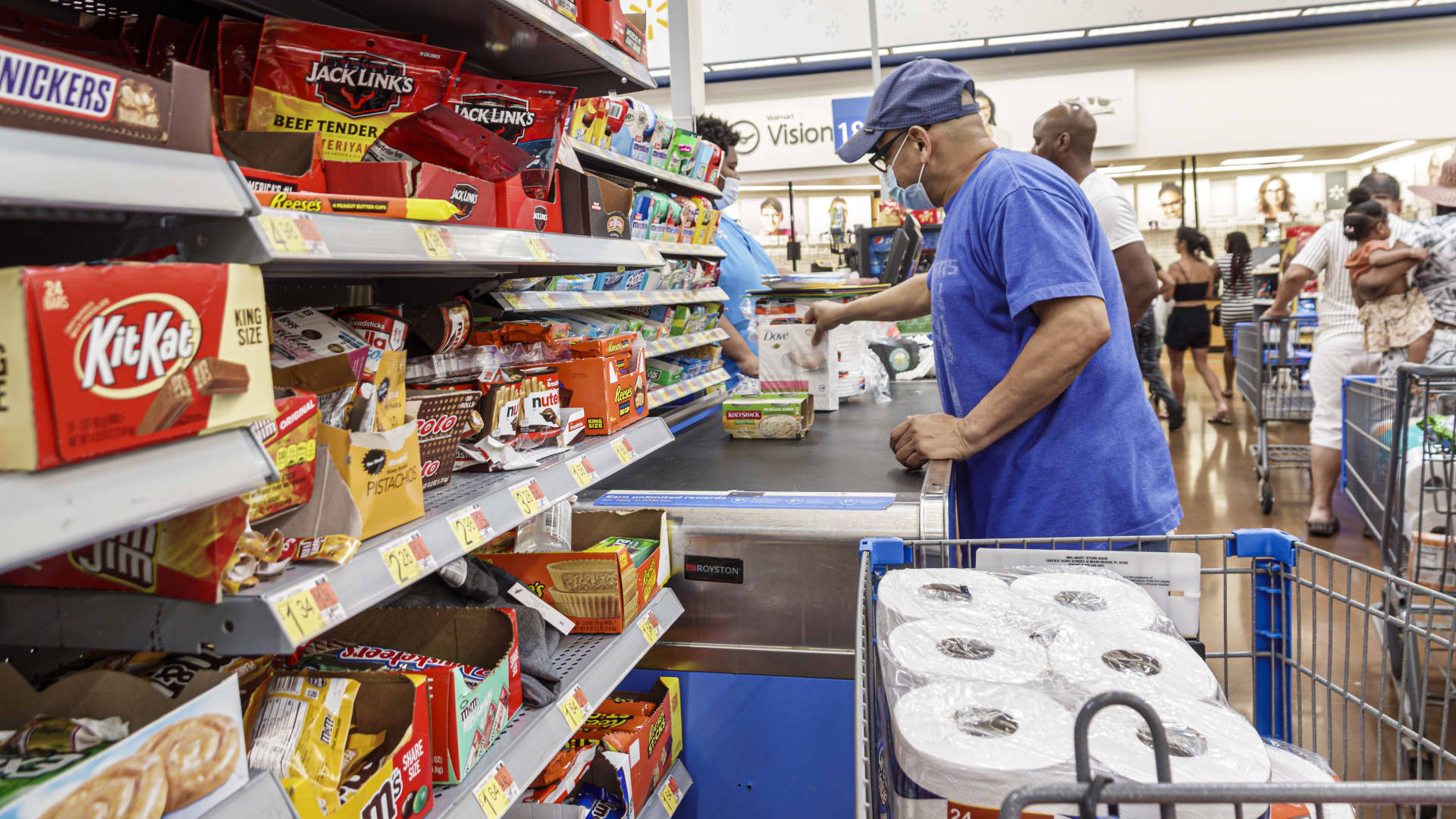Products You May Like
Amid heightened economic uncertainty, Americans, overall, are saving less.
The personal savings rate — how much people save as a percentage of their disposable income — was 3.9% in August, well below a decadeslong average of roughly 8.9%, according to the latest data from the U.S. Bureau of Economic Analysis.
And yet, consumers continue to spend, which has helped the economy grow and could ultimately be the reason the country side steps a recession after all, despite more than a year of gloomy forecasts.
“If you are confident about the future, you don’t need such a high level of savings,” said Diana Furchtgott-Roth, an economics professor at George Washington University and former chief economist at the U.S. Department of Labor.
That doesn’t mean consumers are in the clear. In fact, many are struggling as much or more than before.
When the Covid pandemic brought the economy to a standstill and the U.S. government unleashed trillions in stimulus money, American households were suddenly sitting on a stockpile of cash.
“It was the first recession is U.S. history where disposable income went up,” said Tomas Philipson, a professor of public policy studies at the University of Chicago and former acting chair of the White House Council of Economic Advisers.
But that cash reserve is now largely gone after consumers gradually spent down their excess savings from the Covid years.
Soaring inflation in the wake of the pandemic made it harder to make ends meet. At the same time, the Federal Reserve’s most aggressive interest rate-hiking cycle in four decades made it costlier to borrow.
“I’m concerned,” Philipson said. “People are hit on both fronts — lower real wages and higher rates.”
That makes it particularly hard to set any money aside, said Winnie Sun, co-founder and managing director of Sun Group Wealth Partners, based in Irvine, California, and a member of CNBC’s Financial Advisor Council.
“There are some who are working on a tighter household budget and haven’t really adjusted their spending, as much, with the rise of inflation, so they haven’t been able to save more, even though they know they need to.”
Nearly half, or 49%, of adults have less savings or no savings compared with a year ago, according to a Bankrate survey.
More than one-third also now have more credit card debt than cash reserves, which is the highest on record, and 57% of adults said they could not afford a $1,000 emergency expense, another Bankrate survey found.
The average American’s savings are 32% behind where they should be when scaled against their salary, according to one analysis by DollarGeek based on data from the Fed’s Survey of Consumer Finances.
You’ll likely need more cash than you think
Recession or not, experts say having a cash reserve is key.
While most suggest keeping three to six months’ worth of cash on hand to weather a job loss or other economic disruption, that’s likely not enough, according to Preston Cherry, a certified financial planner and founder and president of Concurrent Financial Planning in Green Bay, Wisconsin.
These days, households should strive to fund twice the usual recommendation, he advised.
If there is an economic contraction, chances are it could go on for a while. Over the last half a century, recessions have lasted from two months to more than 18 months.
“If emergency funds are ready, they help smooth the process,” said Cherry, who is also a member of CNBC’s Advisor Council. “The good news is that recessions end eventually, and there is hope, recovery, and upside.”
Pay down debt as your first safeguard
Before you can build up a proper savings cushion, prioritizing debt repayment is crucial, Sun said.
“Saving while you have debt is like swimming in a pool with a broken arm — you can’t get very far effectively.”
Start by paying off any high interest rate debt, such as credit cards, as quickly as possible, even if that means picking up a temporary job or side gig, Sun advised.
“Once your debt is under control, focus on building your emergency fund, either concurrently or immediately afterward.”
Where to save cash effectively
Even when Americans have an emergency fund, most said they don’t know the best ways to save to reach their short- or long-term savings goals, studies show.
These days, savers could get better returns on their cash than they have in years.
After the series of rate hikes from the Federal Reserve, top-yielding online savings account rates are now as high as 5%, the highest since 2008, according to Bankrate.com.
“The easiest thing to do,” said CFP Ted Jenkin, founder and CEO of oXYGen Financial in Atlanta and a member of CNBC’s FA Council, is “look at moving money out of your checking account into a savings account.”
Alternatives like Treasury bills, certificates of deposit or money market accounts have also emerged as competitive options for cash, although this may mean tying up your savings for a few months or more.
Jenkin recommends buying short-term, relatively risk-free Treasury bonds and laddering them to ensure you earn the best rates, a strategy that entails holding bonds to the end of their term.
